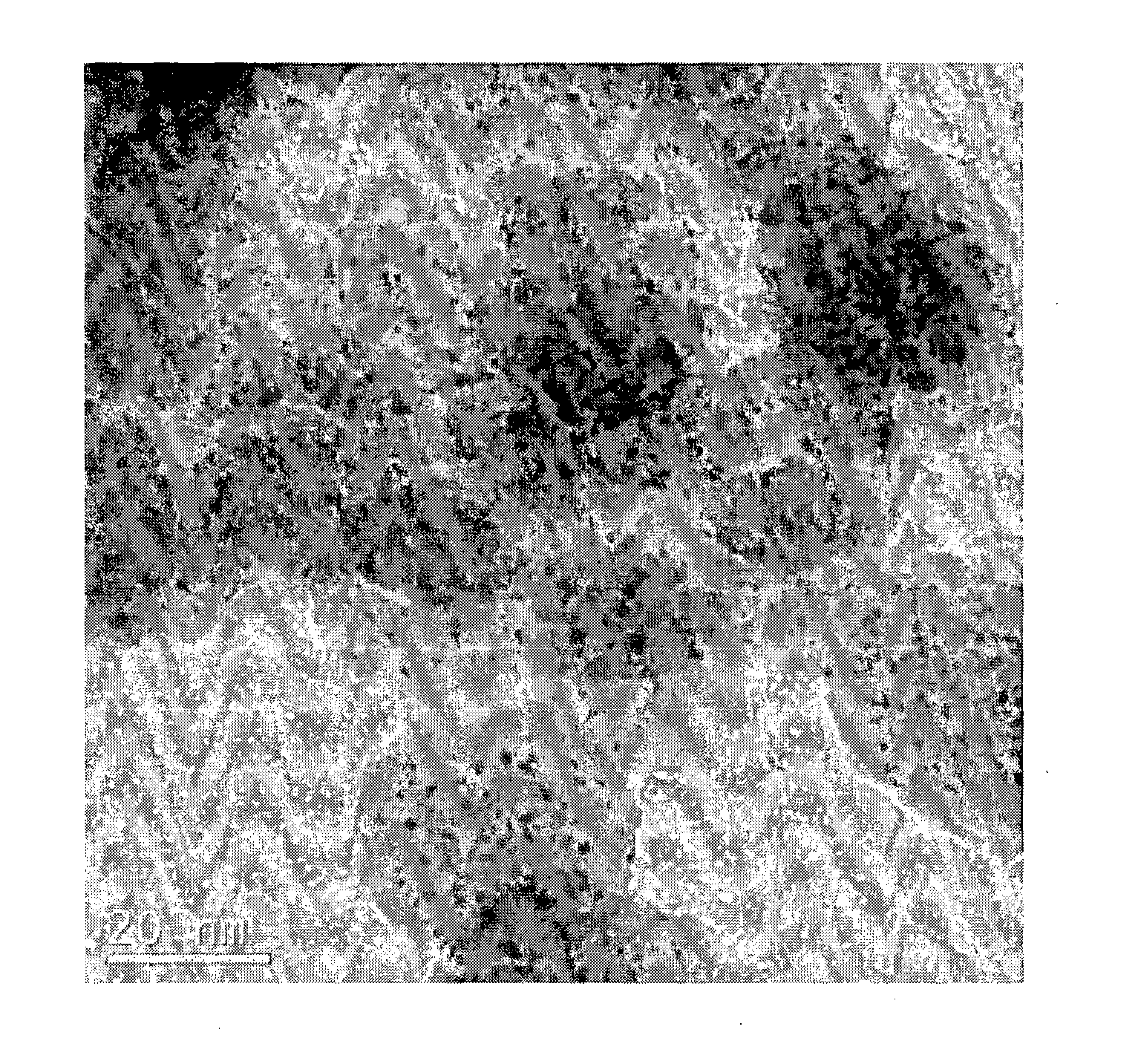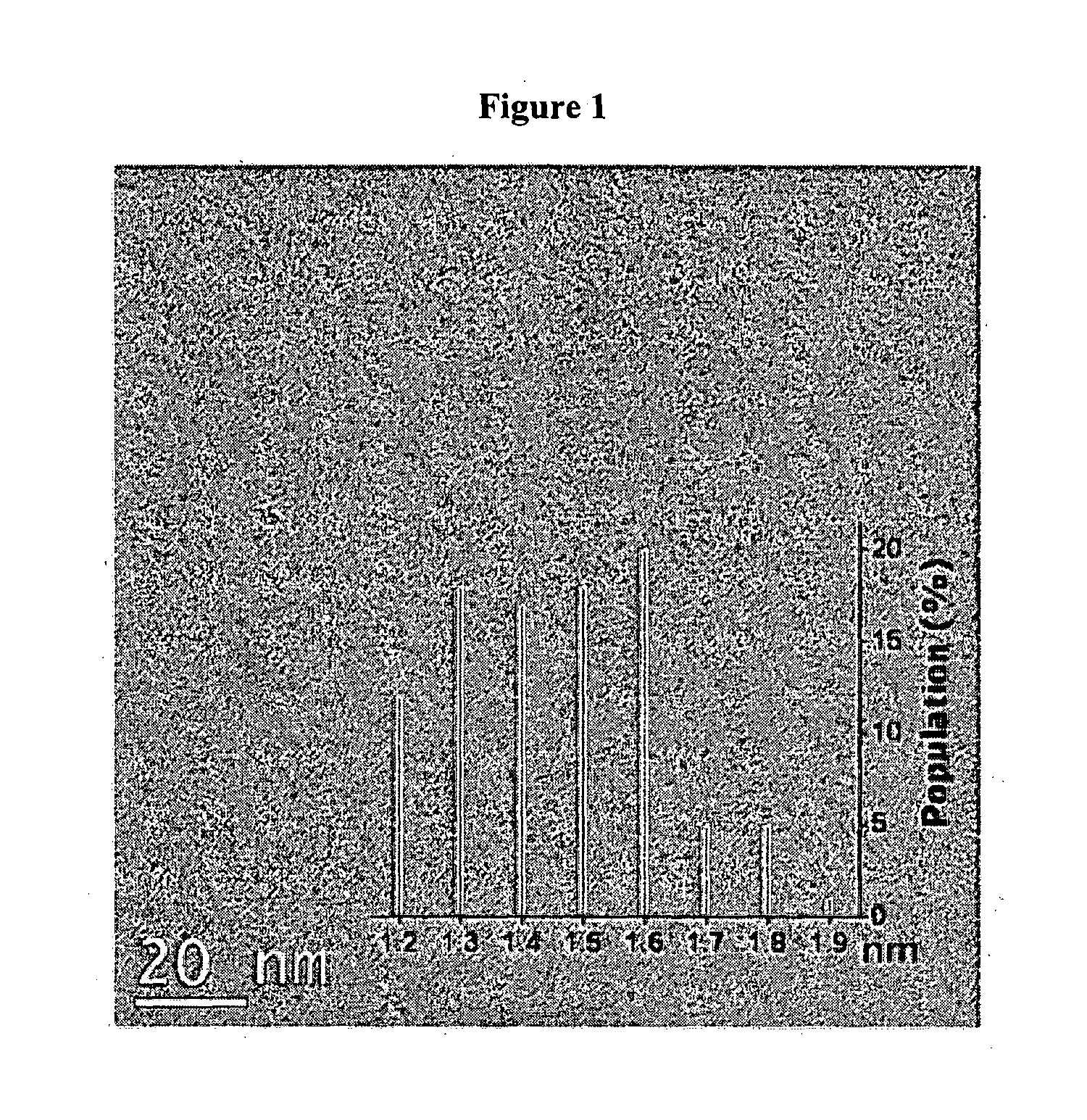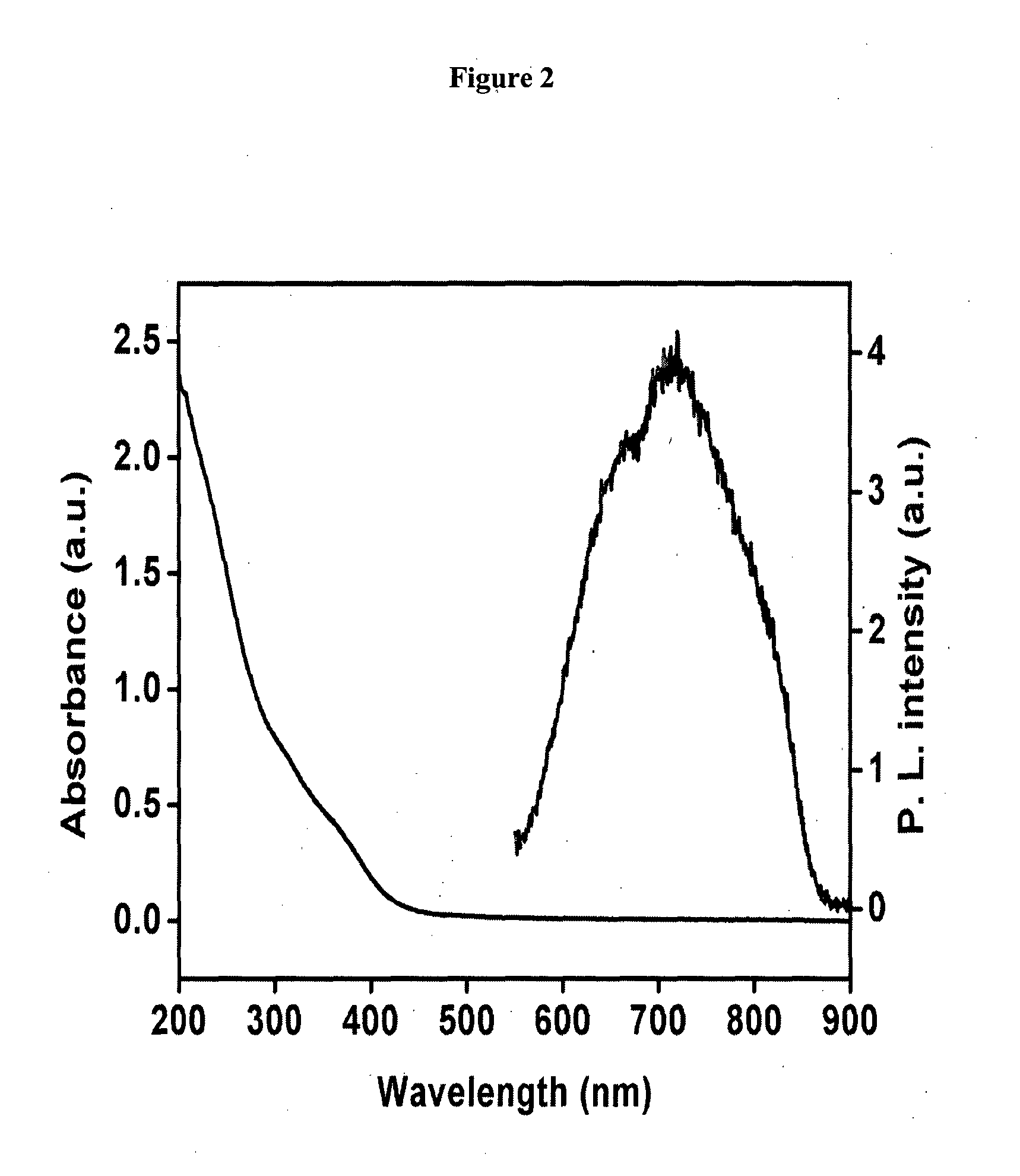Stable oxide encapsulated metal clusters and nanoparticles
a technology of oxide encapsulation and metal clusters, which is applied in the direction of liquid surface applicators, physical/chemical process catalysts, instruments, etc., can solve the problems of unaddressed area, process described in the art has not been successfully transferred to encapsulating gold clusters in silica, and limited application
- Summary
- Abstract
- Description
- Claims
- Application Information
AI Technical Summary
Benefits of technology
Problems solved by technology
Method used
Image
Examples
example 1
Synthesis of Thiol Ligand
Synthesis of N,N,N-Tripropyl(11-mercaptoundecyl)ammonium Chloride
[0067]11-bromo-1-undecene (5.4 g, 21 mmol) was added to a tripropylamine solution in ethanol (10.2 g, 58 mmol) and stirred for two days under reflux condition at 80° C. The solvent was reduced in vacuo resulting in the bromide salt (S). It was purified by washing (3 times) with hexane (100 ml) under sonication (yield: 93%). 1H NMR (CDCl3, 400 MHz): 5.73-5.83 (m, 1 H, CH=CH2), 4.86-4.96 (m, 2 H, CH=CH2), 3.31-3.37 (m, 6 H, CH3CH2CH2N+), 2.97-3.03 (m, 2 H, —CH2CH2N+), 1.96-2.03 (q, 7 Hz, 2 H, CH2-CH=CH2), 1.62-1.91 (m, 6 H, CH3H2CH2N+), 1.19-1.43 (m, 12 H, CH2), 1.03 (t, 7 Hz, 9 H, CH3CH2CH2N+).
[0068]To a solution of (S) (19.0 mmol) in 1:1 mixture of toluene:ethanol Azobisisobutyronitrile (AIBN) (10.0 mmol) and thioacetic acid (80 mmol) were added. The reaction was stirred under reflux for 4 h. The solvents were reduced in vacuo resulting in thioester (G). It was purified by washing (3 times) wit...
example 2
Synthesis of thiol stabilized Gold Nanocluster
[0069]8.5 ml HAuC4 solution (10 mmol) in acetonitrile was mixed with 20 ml of acetonitrile. 0.593 g of thiol in 2 ml of methanol was added to this mixture. The mixture was stirred for 30 min. 100
[0070]NaBH4 solution (1.57 M) in methanol was added and stirring was continued for 45 minutes more. All the steps of reaction were carried out at 0° C. 30 ml water was added with gold nanoparticles solution. Acetonitrile was removed by rotavapour. Gold nanocluster in water. solution was purified by dialysis. UV-visible spectra for gold nanocluster has showed characteristic exponential decay curve. Ratio of thiol to gold (S / Au) was taken 18.
example 3
Synthesis of Silica Encapsulated Gold Nanocluster
[0071]The gold cluster solution was encapsulated with silica using a simple hydrolysis method (modified stober method) in ethanol-water mixture. 500 μGold nanocluster solution was mixed with water (2 ml)-ethanol (8 ml) mixture. 30 μl sodium hydroxide solution (0.1 M) was added to the mixture. 0.05 mmol tetraethyl orthosilicate (98 wt % Aldrich) was added and the mixture was stirred at room temperature two days. Silica encapsulated gold nanocluster was separated from the reaction medium by centrifuging at 14000 rpm and dispersed into ethanol.
PUM
| Property | Measurement | Unit |
|---|---|---|
| size | aaaaa | aaaaa |
| diameter | aaaaa | aaaaa |
| size | aaaaa | aaaaa |
Abstract
Description
Claims
Application Information
 Login to View More
Login to View More - R&D
- Intellectual Property
- Life Sciences
- Materials
- Tech Scout
- Unparalleled Data Quality
- Higher Quality Content
- 60% Fewer Hallucinations
Browse by: Latest US Patents, China's latest patents, Technical Efficacy Thesaurus, Application Domain, Technology Topic, Popular Technical Reports.
© 2025 PatSnap. All rights reserved.Legal|Privacy policy|Modern Slavery Act Transparency Statement|Sitemap|About US| Contact US: help@patsnap.com



